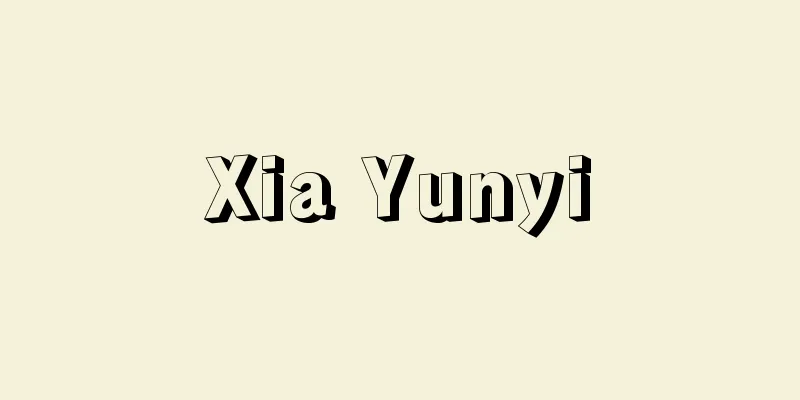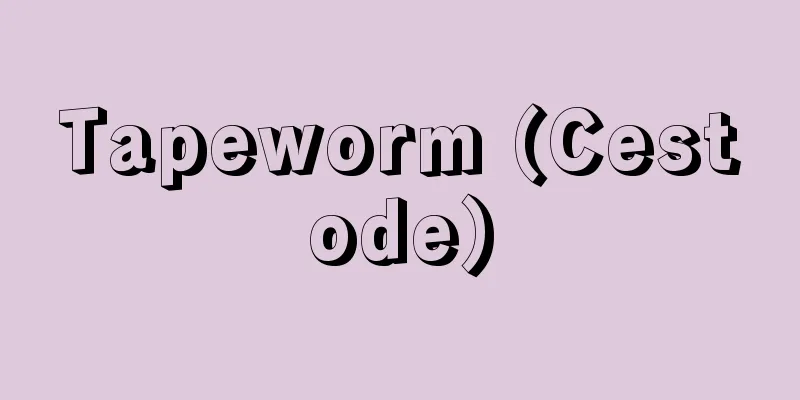Restoration of Imperial Rule - Taiseihokan

|
"Taisei" means the government of the whole country, and refers to a major political incident at the end of the Edo period when the 15th shogun, Tokugawa Yoshinobu, returned the government that the Tokugawa had held for 265 years to the Imperial Court on October 14, 1867 (Keio 3), and the Imperial Court granted imperial sanction to this on the following day, October 15th. As the movement to overthrow the shogunate, centered on Satsuma and Choshu, progressed, the Tosa clan, advocating a system of public government, tried to have the shogunate take back control of politics by returning power to the government. Tosa clan councilor Goto Shojiro contacted the shogunate's junior councilor Nagai Naoyuki (also read as "Naomune"), and on October 3rd, in the name of the former lord of the clan, Yamauchi Toyonobu (Yodo), submitted a petition for the restoration of imperial rule to the shogun through senior councilor Itakura Katsushige. This was based on the idea of Sakamoto Ryoma's "Eight Policies on Board the Ship". On the 6th, the Aki (Hiroshima) clan also submitted a petition. Upon hearing this, Tokugawa Yoshinobu asked the shogunate's officials for their opinions, and then on the 13th he gathered the senior vassals (feudal lords) of the various domains in Kyoto at Nijo Castle to ask for their opinions.The following day, on the 14th, he sent a petition restoring imperial rule to the military messengers Hino Sukemune and Asukai Masanori. The severe domestic and international political situation was behind Keiki's actions, but he believed that even if he returned government to the Imperial Court, the initiative in settling the political situation would eventually be in Keiki's hands, and that he would be able to create a "taikun" state centered on Keiki, based on the idea of a public deliberative government. On this day, the Satsuma-Choshu anti-shogunate faction obtained the "Secret Imperial Rescript to Overthrow the Shogunate." However, since the Imperial sanction for the Restoration of Imperial Rule was granted the following day, the 15th, the anti-shogunate faction was caught off guard. As a result, on December 9th, the anti-shogunate faction staged a coup d'état to restore the monarchy. [Akira Tanaka] "Yoshihisa Ishio, 'Restoration of Imperial Rule to the Emperor and the Secret Imperial Rescript on the Overthrow of the Shogunate' (1979, Sanichi Shobo) " "Nobuhisa Hagiwara, 'Restoration of Imperial Rule to the Emperor: A Distant Cliff - Excerpts from the Diary of Ernest Satow 6' (1999, Asahi Shimbun)" [References] | | | | | | |Source: Shogakukan Encyclopedia Nipponica About Encyclopedia Nipponica Information | Legend |
|
「大政」とは天下の政(まつりごと)の意で、第15代将軍徳川慶喜(よしのぶ)が1867年(慶応3)10月14日、徳川氏265年間の政権を朝廷に奉還し、翌15日、朝廷がそれを勅許した幕末期の一大政治事件をいう。 薩長(さっちょう)を中心とした倒幕運動が進むなかで、土佐藩は、公議政体論の立場から幕府に政権を返上させ、幕府に政局の主導権をとらせようとした。すなわち、土佐藩参政後藤象二郎(しょうじろう)は、幕府の若年寄格永井尚志(なおゆき)(「なおむね」とも読む)と連絡をとり、前藩主山内豊信(とよしげ)(容堂)の名で、10月3日、大政奉還建白書を老中板倉勝静(かつきよ)を通して将軍に提出した。これは坂本龍馬(りょうま)の「船中八策」の発想に基づくものであった。ついで6日、芸州(広島)藩も建白書を提出した。これを受けた徳川慶喜は、幕府の有司に意見をきき、ついで在京の諸藩の重臣(諸侯)を13日、二条城に集めて意見を求め、翌14日、大政奉還の上表文を武家伝奏日野資宗(すけむね)・同飛鳥井雅典(あすかいまさのり)に出した。 こうした慶喜の行動の背景には厳しい内外の政治情勢があったが、大政をいったん朝廷に返しても、いずれ政局収拾の主導権は慶喜の手中に収まり、公議政体論に基づく慶喜中心の「大君(たいくん)」制国家を創出しうるとみていたのである。 この日、薩長討幕派は「討幕の密勅」を得たが、大政奉還が翌15日勅許されたから、討幕派は足もとをすくわれ、ために、12月9日、討幕派による王政復古クーデターが敢行された。 [田中 彰] 『石尾芳久著『大政奉還と討幕の密勅』(1979・三一書房)』▽『萩原延寿著『大政奉還 遠い崖―アーネスト・サトウ日記抄6』(1999・朝日新聞社)』 [参照項目] | | | | | | | |出典 小学館 日本大百科全書(ニッポニカ)日本大百科全書(ニッポニカ)について 情報 | 凡例 |
>>: Three major trends in thinking - Taisei San Tenko
Recommend
Hui - Pirate (English spelling) Hui
One of China's ethnic minorities. They have t...
insemination
In the case of internal fertilization, the male e...
Slang - Zokuji
A type of variant character. In contrast to forma...
Kotetsu
[Raw]? Echizen [Died] Enpo 5 (1677). A master craf...
Otsu Castle
Hirajiro ( Mizu Castle) was located in Otsu City, ...
Radnoti M. (English spelling) RadnotiM
… An outstanding figure in the interwar period wa...
Inmarsat - Inmarsat plc
A private communications company that provides mo...
Nichihara [town] - Nichihara
A former town in Kanoashi District, western Shiman...
Helmet - Helmet (English spelling)
A type of hat. There are records that it was orig...
Central African Federation
…The Central African Federation, also called the ...
Michelangelo - Michelangelo Buonarroti
Italian sculptor, painter, architect, and poet. B...
Student Support Association
A foundation established for the purpose of provid...
Centrex
Centrex is a new market of the Nagoya Stock Exchan...
Uccello - Uccello (English spelling)
Italian painter and mosaicist of the early Renais...
Theatrical Manners - Engekisahou
...The Fronde, the biggest challenge to the estab...









